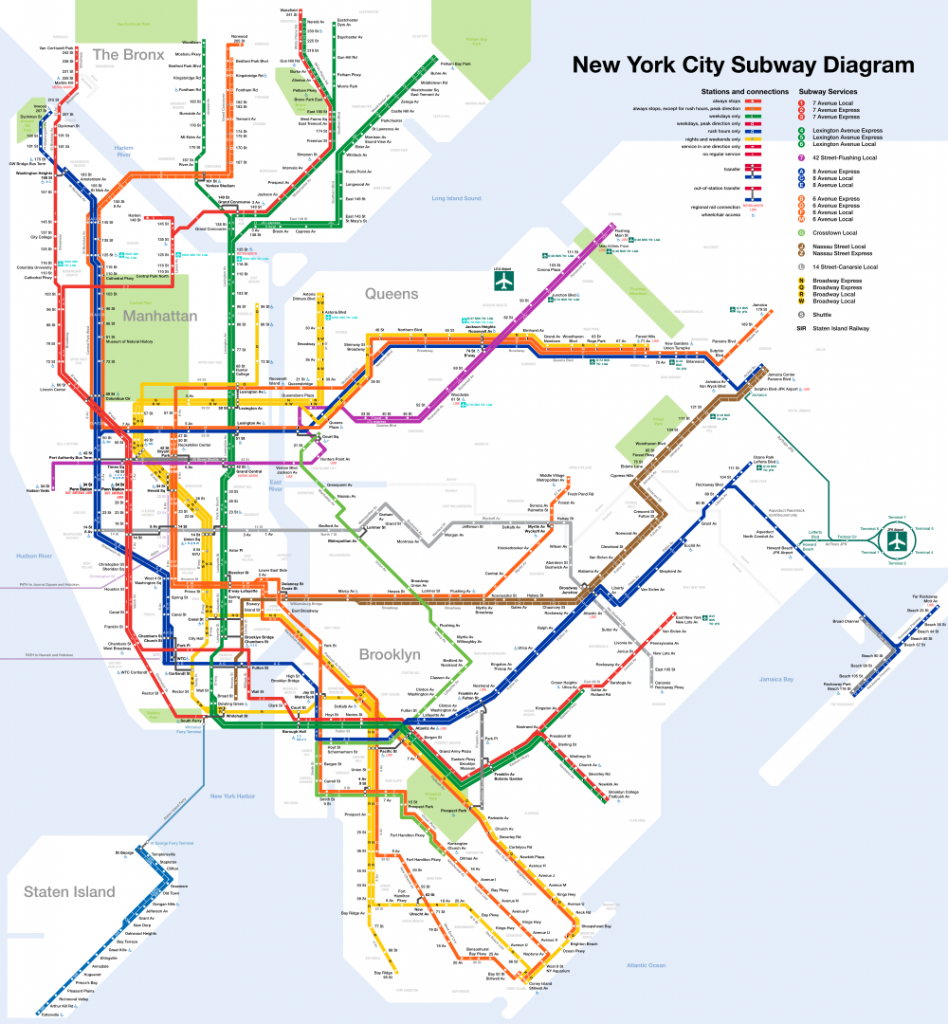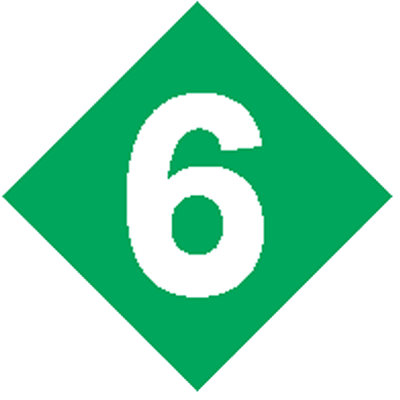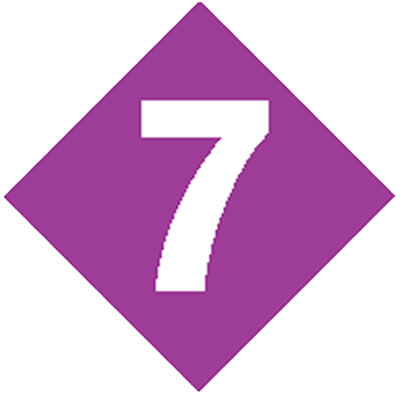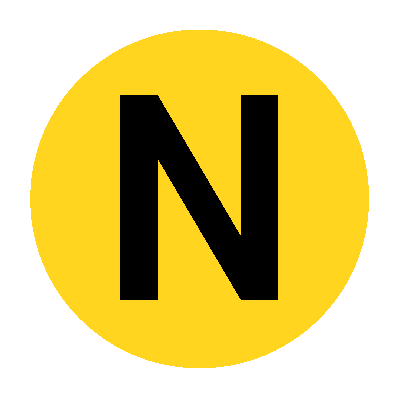New York is a huge City. It is almost seven times the size of Paris, which means getting from one point to another can be difficult without a good public transit system. On the other hand, The Big Apple is home to more than 8.6 million people.
What’s more, the city receives around 65 million visitors annually, and most of them flock to Manhattan. Now, the island of Manhattan is only 13.4 miles long and 2.3 miles wide, giving it a total area of 22.7 square miles.

So, what you end up having is a city of contradictions. New York is an enormous place, home to a lot of people, but despite its size, it can get very crowded because the majority of people there concentrate on a piece of land that represents around 7% of the entire area of New York.
What Exactly is the New York City Subway System?
The New York City Subway is the heartbeat of the city’s public transportation. As one of the world’s oldest and most expansive transit systems, it boasts an impressive daily ridership of approximately 5.5 million (pre-COVID-19). Managed by a branch of the Metropolitan Transportation Authority (MTA), it’s colloquially known as the “trains.” When New Yorkers mention taking the “train,” they typically refer to the subway. It’s worth noting that terms like “metro,” “underground,” or “tube” aren’t used here.
For the most part, the subway operates underground in Manhattan, but in other boroughs, it often runs on elevated tracks. Barring certain exceptions, the system is open 24/7, making it resilient even in the face of challenges, save for extreme events like hurricanes.
What Isn’t the NYC Subway?
While the subway is integral to New York, it’s not the only rail system in the vicinity. Other significant train-based systems in the area include:
- AirTrain JFK/Newark
- Amtrak
- Long Island Rail Road (LIRR)
- Metro-North Railroad
- New Jersey Transit
- Port Authority Trans-Hudson (PATH)
Except for the AirTrains, these are commonly termed “commuter trains,” serving daily travelers from outside NYC. This guide doesn’t cover these systems. To avoid mix-ups, locals often specify the system by name, like “taking Metro-North” or “coming in on the PATH train.”
Grasping NYC’s Geographic Layout
NYC is segmented into five boroughs, with Manhattan housing most tourist hotspots. Locals often dub Manhattan simply as “the city.” The subway operates across Manhattan, Queens, Brooklyn, and the Bronx but doesn’t venture outside NYC. For that, one would need the aforementioned commuter trains.
Train directions often align with boroughs:
- Manhattan-bound trains head towards Manhattan
- Queens-bound trains move towards Queens
- Brooklyn-bound trains aim for Brooklyn
- Bronx-bound trains target the Bronx
The Staten Island Railway, exclusive to Staten Island, is distinct from the subway. Although both systems appear on the subway map, they aren’t physically connected. To reach Staten Island, one can opt for the free Staten Island Ferry or drive across the Verrazano-Narrows Bridge. However, the fare system is consistent across both, allowing free transfers within two hours.
Deciphering Manhattan’s Street Grid
Manhattan’s iconic street layout is a grid. Streets (or “St”) run east-west, while avenues (“Ave”) go north-south. As you move north, street numbers rise, and as you head west, avenue numbers increase. This grid isn’t flawless; for instance, most of 4th Ave is known as Park Ave, and the grid is absent below 14th St due to historical reasons.
The spaces between streets and avenues, or “blocks,” serve as informal distance measures. Blocks can be “short” (north-south) or “long” (east-west), with the latter also called crosstown blocks. Typically, a short block takes a minute to traverse, while a long one requires 3-4 minutes.
NYC Subway Guide
New York City relies on a strong public transit system, one that has at its core a large, complex subway system that confounds anyone who faces it for the first time. In fact, with more than 470 stations, the New York subway system is the largest in the world. It carries more than 1.7 billion commuters every year, and it has 36 lines.
So, even though the subway system is comprehensive, taking you wherever you need to go, especially in Manhattan, it can be intimidating to anyone using it for the first time. You can easily get lost or ride the wrong line without discovering your mistake until way later.
| Train Services | Line Name | Express | Local |
|---|---|---|---|
   | Broadway – 7th Ave. |   |  |
    | Lexington Ave. |    |  |
  | Flushing |  |  |
   | 8th Ave. |  |   |
    | 6th Ave. |   |   |
    | Broadway |   |   |
  | Nassau St. |   | |
 | Canarsie |  | |
 | Crosstown |  | |
 | Various shuttles |  |
Using the Subway System
Having covered the basics, let’s look at how you can navigate the subway system successfully, starting with the first obvious step, buying a MetroCard.
Buying a MetroCard
You can purchase MetroCards from specialized booths or from vending machines. Both options should be available in any of the 472 stations in the city. Now, at the booth, you can pay cash, and you get to speak to an actual human being who can answer your questions and give you a map if you need one.
MetroCards are available at every subway station, either from a staffed booth or a MetroCard vending machine. There are two machine types: a smaller one accepting only cards and a larger one accepting both cash and cards. The machine interface might seem complex, but with practice, it becomes intuitive.
When paying with cash, note that machines can only return up to $9 in coins. For card payments, if you’re from outside the U.S., use “99999” as your ZIP code. Some card companies might limit the number of MetroCards you can buy in a short period.
Types of MetroCards available
The kind of MetroCard you buy will depend on your usage. Broadly speaking, there are three main categories:
- Regular MetroCard (Pay-Per-Ride): This card deducts a set amount ($2.75 as of the provided data) for each subway ride. The card’s balance decreases with each use, but you can add funds as needed. It’s shareable among up to four people and can be used for other NYC public transport, like buses and the AirTrain to JFK.
- Unlimited Ride Cards: These cards offer unlimited subway rides for a specific duration:
- 7-Day Unlimited Ride: $33 (+ $1 for the card)30-Day Unlimited Ride: $127 (+ $1 for the card)
Within subway stations, you’ll find standalone MetroCard readers. Swiping your card reveals its balance and status. The display can be a tad confusing, but key terms to note include:
- “TIME EXPIRED”: Indicates a previously active time window has ended.
- “THRU”: Shows the active time window’s expiration date.
Which card should you purchase?
The answer in short, depends on how long you are planning to stay in New York and how many rides you are planning to make. If you are just passing through, then a single use ticket seems as the clear choice. However, if you are staying for two or three days, then a Regular MetroCard might make the most sense. But, for anything more than four days, an unlimited card will probably be the best choice, unless you don’t plan to move around a lot during your stay.
There is actually a breakeven point that will help you decide whether a regular card or an unlimited one is right for you. If you estimate that you are going to take 12 rides or less, with each ride being a one-way trip, then you should get a regular card and fill that baby up. Alternatively, if you plan to take more than 12 rides, then it is an unlimited card for you my friend. Now, take it from someone with a little experience in the matter, given how comprehensive the metro system is, you will probably be making way more than 12 rides if you are staying for 4 days or more.
There is one caveat to what was just said. Whereas you can swipe a Regular MetroCard four times in a row, you have to wait 18 minutes between every time you swipe your Unlimited MetroCard. Ergo, couples traveling together might have to calculate how many trips they plan to make conjointly before making a decision.
Getting on the Actual Subway
Having bought your MetroCard, you are now ready to get on the subway. To do that, here are the basics you need to know:
Unfortunately, many of the card readers at the turnstiles can get a bit fussy. If you swipe your card too fast, the reader might not work. If you swipe it too slow, you’ll still have the same problem. And, if the card gets bent as you are swiping, you are still going to have a hard time passing through. To make matters worse, New Yorkers are irritable people, so any prolonged delay on your part is bound to frustrate them, and you will hear about it.
The Terms “Uptown” and “Downtown” Matter
Broadly, Manhattan is split into:
- Uptown (north of 59th St.)
- Midtown (between 59th St. and 14th St.)
- Downtown (south of 14th St.)
While these terms describe specific regions, “uptown” and “downtown” also indicate travel direction. Heading north (towards Bronx or Queens) is “uptown,” while moving south (or towards Brooklyn) is “downtown.” Instead of “north” or “south,” locals prefer these terms. However, “east” and “west” are still in use, even if not entirely accurate. For instance, traveling east-west is often termed “crosstown.”
Swiping into the wrong platform can be problematic, especially if you are at a small station where the only way you can get to the other side is to walk outside the station, get across the street, and wipe into the other platform. So, one way to distinguish which platform takes you where is by looking at whether the trains passing are heading uptown or downtown.
In most other parts of the world, downtown denotes a city center or hub, but in New York things are a bit different. Curiously, they are simpler in New York, where downtown literally means down town or south of the town, while uptown means north of the town. So, if you are heading south, then you want to take the train heading downtown. On the other hand, if you are heading north, just take the uptown trains.
Parallel, Express, and Local Lines: What’s It All About?
One element that confuses many newcomers is the difference between express lines and local lines. In a nutshell, express lines don’t stop at every station; instead, they stop after every fourth or fifth station. They are a way to traverse the subway system faster. Alternatively, local lines stop at every station.
It is worth knowing that if you get on an express line by accident when you actually meant to get on a local one, you will probably end up missing your stop as the express line is more than likely not going to stop there. Ergo, unless you’re comfortable using the New York subway, you’re best bet is to stick to the local lines until you feel confident enough to venture on an express line.
A Map Can Be Your Best Friend
While numerous apps and online platforms showcase transit lines, it’s wise to have a copy of the official subway map from the MTA. This map is accessible on the MTA website. Physical copies are also free at subway station booths. Given that the map undergoes periodic updates (due to station repairs or closures), always ensure you have the most recent version. The map’s date can be found at its bottom right.
Fortunately, with the preponderance of smartphones, you can just Google Maps to get around. If you type into Google maps your intended destination, the application will spot your current location and tell you the best and fastest route to where you want to go. This includes telling you which trains you should take as well as which stations you should transfer at. Google will even give you an estimate of how much time the trip will take you.
Be Prepared For Maintenance Delays
As mentioned earlier, the NYC subway system needs consistent repair and maintenance, which means that some lines might be delayed and some stations temporarily closed. One way you can anticipate this is by going over the MTA website where any scheduled maintenance or any other delays are announced
All that said, riding the New York subway is like anything in life: It gets easier with time. You will learn from practice, and in no time, you will be navigating the public transit system like a pro. And once you do, you will just realize how powerful and efficient the system truly is.
Myths Surrounding the NYC Subway System
Throughout the years, numerous myths have spread about the subway in NY that it has almost garnered a notorious reputation. Yet, much of what is said is just that: myths and rumors that are far removed from reality. Here are some of the most famous:
The NYC subway closes early
Actually, the NYC subway system is open around the clock. Even though most subway systems around the world, including the one in Paris and the one in London, close late at night, the subway in New York doesn’t.
- However, there are a few caveats you want to bear in mind. First of all, even though the subways run 24/7, the trains run a little less regularly late at night than they do during the day. This means that if you want to catch a train at 4 am, your average wait time will probably be longer than if you wanted to take the same train at 4 pm.
- Second of all, although the subway system is always open, some lines are shut down for repairs or maintenance. So, it is always helpful to know more than one way to get to your destination.
- Finally, of the 472 stations spread out over New York, some of them do close late at night. You can distinguish between stations that close early and those that never do by the color of the globes outside of them. Stations that close at night will have red globes outside their entrance, while 24-hour stations will have green globes stationed at their entrance. That said, the number of stations with red globes has been going down over the past few years, which means that you might not see one if you’re staying for a short period in NY.
The subway system isn’t safe
This rumor is one of the remnants of a time gone by, the 1990s. Back then, the NYC subway system wasn’t safe; however, Bill Bratton, a police commissioner appointed in the 90s was able to turn things around, making New York one of the safest cities in the world.
Today, the violent crimes in New York are at a historic low, encouraging more and more New Yorkers to take the subway system. You can even take your kids on the subway system and feel safe. Even some New Yorkers are fine letting their kids get on the subway on their own.
Nevertheless, just because the system is safe doesn’t mean that you shouldn’t be vigilant. The subway can get crowded, and crowded spaces are a place where anything can happen. There are pickpockets, panhandlers, and aggressive individuals who will start a rowdy argument with you just for staring at them.
The NYC subway is always crowded
This one is sort of true, but not all times are the same. You usually have peak hours when the subway is extra crowded. These are usually on weekdays, which are from Monday to Friday, and during either the morning rush or the evening rush. And, just so you know, the morning rush usually takes place from 7 am till 10 am, and the evening rush lasts for another three hours, starting at 5 pm. Aside from these peak hours, things are pretty manageable.

Born and raised amidst the hustle and bustle of the Big Apple, I’ve witnessed the city’s many exciting phases. When I’m not exploring the city or penning down my thoughts, you can find me sipping on a cup of coffee at my favorite local café, playing chess or planning my next trip. For the last twelve years, I’ve been living in South Williamsburg with my partner Berenike.

